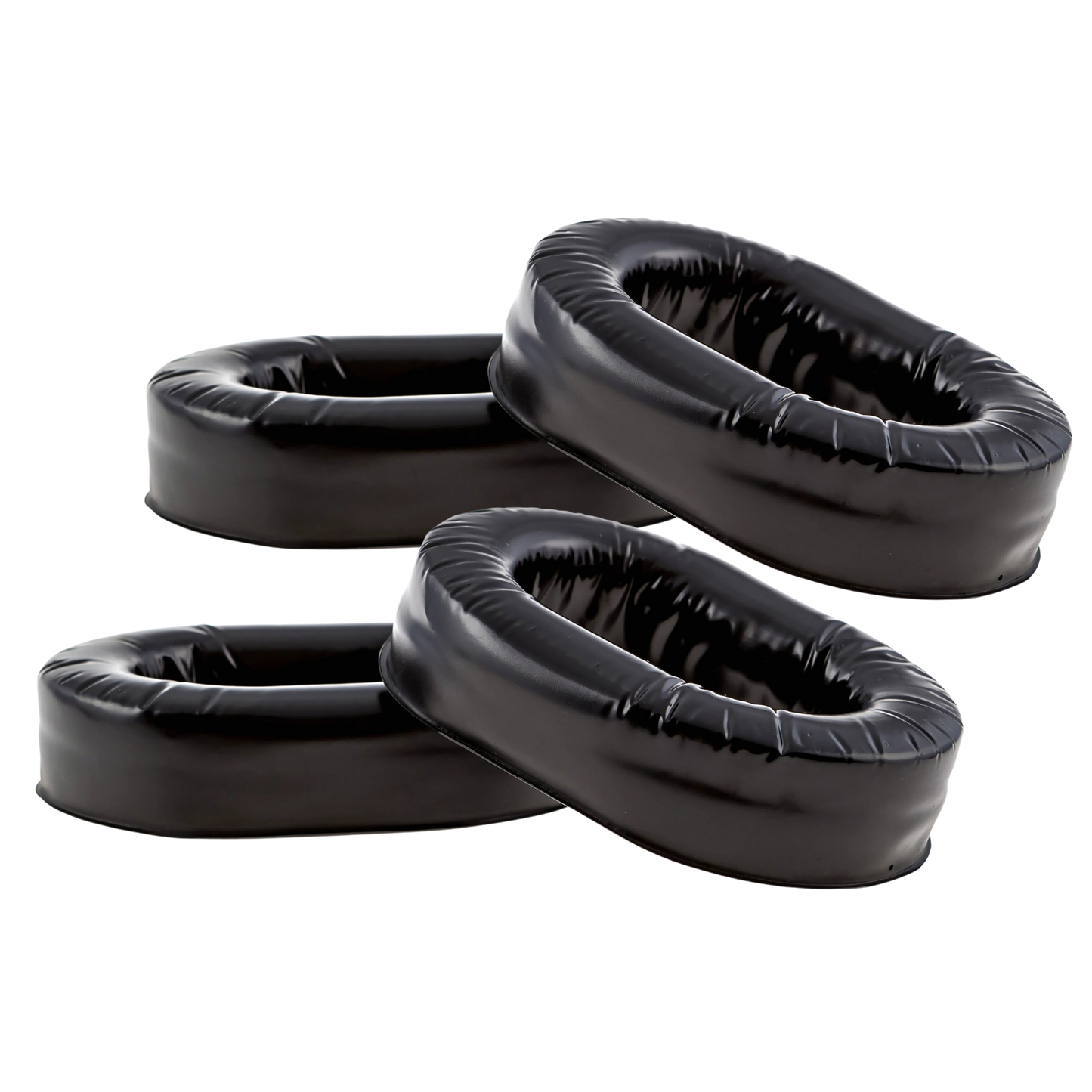
Kore Aviation - In this article, we’ll explore the two most popular ear seal options for pilots—foam and ultra-plush silicone gel. We’ll compare their benefits and highlight which one suits different flying needs. Let’s dive in and break it all down so you can make the best choice for your next flight.
What Are Ear Seals, and Why Do They Matter?
If you’ve ever worn an aviation headset—even just once—you’ve probably noticed the soft padding that wraps around your ears. Those are your ear seals, and they’re not just there for comfort. They play a huge role in blocking out cockpit noise, helping you hear ATC clearly, and making sure your headset actually works the way it’s supposed to.
It doesn’t matter if you’re on your first solo or your hundredth cross-country—engine noise, wind, and radio chatter are part of the ride. A good pair of ear seals helps keep all that under control so you can focus, communicate, and fly safely.
How Ear Seals Affect Comfort and Focus in Flight
Long flights are part of the job, whether you're a student pilot or flying commercial. What most people don’t think about is how much strain a headset can cause if the ear seals aren’t doing their job right.
Poorly fitting seals can press too hard, cause hot spots, or even lead to headaches—especially after a few hours. On top of that, if the seal isn’t tight, noise creeps in, and that makes it harder to catch important calls from ATC. It also forces you to crank up the volume, which leads to ear fatigue fast.
The goal of a proper seal is simple: less noise, less pressure, and more comfort. When your headset fits like it should, everything from radio calls to in-flight checklists just feels easier.
Comparing Foam vs Silicone Gel Ear Seals
Different ear seals are made for different uses and can vary based on what a pilot requires. While there are a variety of ear seals out there, let’s focus on the two types most commonly used by pilots today—and the most popular two: foam and silicone gels.
Foam Ear Seals: Lightweight, Affordable, and Simple
Foam ear seals are the basic, no-frills option. They’re lightweight, soft, and adapt fairly well to the shape of your head. It also gives you a decent level of noise isolation without feeling bulky.
Why pilots like them:
- Soft and flexible for casual use
- Super lightweight—barely feels like you're wearing them
- Cost-effective and easy to replace
- Works fine for short flights or quieter aircraft
They offer decent noise reduction and are ideal for flight students, beginner pilots, casual flyers, or anyone looking for a comfortable headset without the higher price tag.
Silicone Gel Ear Seals: Premium Comfort for Longer Flights
For pilots who fly more often—or just want more comfort—silicone gel ear seals are a step up. These are typically filled with a soft gel and covered in a durable silicone layer that conforms snugly around the ears, forming a better seal and reducing outside noise more effectively.
They’re made with a silicone exterior and a gel core that molds to your head, distributing pressure more evenly and creating a tighter seal around the ears. The result? Better comfort and noticeably better noise isolation.
Why pilots love them:
- Seriously comfortable, even on long hauls
- Blocks more outside noise, especially in louder aircraft
- Doesn’t absorb sweat or oils—easy to keep clean
- Durable and holds its shape longer than foam
These are sold separately too on the Kore Aviation site, and they're designed to upgrade your experience without replacing your entire headset.
The Hidden Cost of Low-Quality Ear Seals
Some folks overlook ear seals and just use whatever came with the headset until they fall apart. The problem? Cheap or worn-out seals don’t just make you uncomfortable—they mess with how the headset performs.
If the seal breaks or stops forming a tight fit, the sound leaks. You start missing pieces of instructions from ATC or need to turn the volume up to compensate. That might not seem like a big deal until it is.
Also, uncomfortable seals distract you. When you’re constantly adjusting your headset mid-flight or fidgeting because of ear pain, your focus is split. That’s not something you want at 5,000 feet.
Discover More: Choosing the Right Aviation Headset: The Must-Checklist
How to Tell When It’s Time to Replace Your Ear Seals
Ear seals don’t last forever. Foam ones tend to wear out sooner than silicone gel, but both types should be checked regularly. Here's what to look out for:
- Cracks or tears in the seal
- Loss of shape or flattening
- They don’t stay snug against your head
- Increased background noise despite no change in volume
-
Any discomfort after 20–30 minutes of wear
Quick Tip:
Wipe them down with a soft cloth after every flight—especially if you sweat a lot or fly in hot weather. That’ll help them last longer and keep your headset clean.
Which Ear Seals Are Best for Pilots?
Ultimately, the best ear seals for your aviation headset come down to how you fly:
- Foam is great for lighter use and budget-conscious pilots.
-
Silicone gel is ideal for more regular flying, longer trips, and improved comfort.
Both options have their place—and sometimes, upgrading your ear seals is all it takes to make an old headset feel new again. Both also are available from Kore Aviation, allowing pilots to match their headset with the ear seals that best fit their comfort and performance needs.
Kore Aviation ear seals designs incorporate features such as removable and replaceable parts. This helps most pilots to conveniently change the ear seals whenever necessary. Kore seals are also designed with great durability and resistance to wear, which enables pilots to use these for prolonged periods of time.
Final Thoughts
No headset is perfect without a good pair of ear seals. Whether you're flying for fun or getting serious with your training, comfort and clear communication are everything. Foam is a great starting point, but don’t sleep on upgrading to ultra-plush silicone gel ear seals if you're flying more often.
In aviation, little details make a big difference. And when it comes to something that sits on your head for hours at a time, that soft ring around your ears matters more than you'd think.
Choose what fits your flying style, keep them clean, and replace them when they start showing signs of wear. Your ears—and your focus—will thank you.

